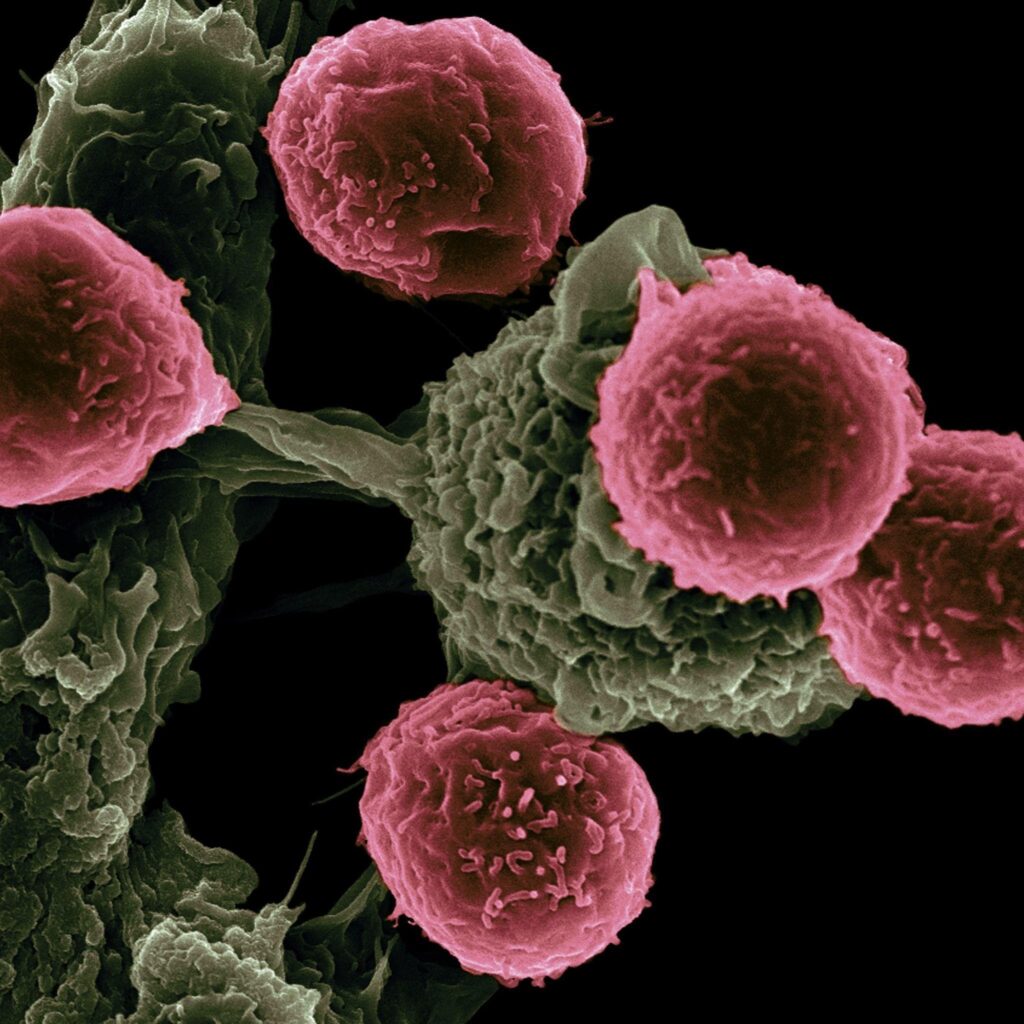
Cancer is a dreadful term that rattles the soul to the core. Many find “cancer” synonymous with misery, and death. Modern medical breakthroughs have brought to light certain drugs and therapies which are effective for limiting the spread of cancers. However, no definitive cure is available to date.
Oncogenes: Genetic Basis Of Cancer
A tumor or cancer is the outcome of alterations in the normal replication of the cell. If the critical genes necessary for optimal division go abrupt, the result is abnormal differentiation, replication, proliferation, and survival.
Some studies have discovered the presence of specific genes involved in the development of cancer in an individual. These genes are known as oncogenes. Direct evidence of oncogenes dates back to the 1980s. A rasH oncogene is the first identified oncogene in humans.
Oncogenes are mutant alleles of normal cell genes i.e. proto-oncogenes. There are certain tumor suppressor genes and oncogenes that are involved in carcinogenesis. (1)
Cancer Treatment
The horrifying malady can be treated using different treatment modalities. Cancer is a very diverse disease. There are innumerous types of cancers occurring in the human body. Some are very aggressive while others are benign.
The approach to a specific cancer is determined by the oncologist based on different factors including:
- Location of the tumor
- Nature of the tumor
- The extent of spread (lymph node/organ involvement)
- Duration of the disease
- Age and health condition of the patient
Once these factors are closely monitored, the oncologist (or a team of cancer specialists) takes the decision of surgical or non-surgical treatment. The following treatment modalities may be adopted by your doctor:
- Chemotherapy
- Radiotherapy
- Transplant (bone marrow)
- Immunotherapy
- Hormonal therapy
- Cryoablation (cold therapy)
- Radiofrequency ablation (electrical energy to kill cancerous cells)
- Surgical excision of the tumor
Alas! The prevalent cancer therapies are filled with side effects. It is not just cancer but the drugs too that seriously compromise the quality of life in patients. (2)
Chemotherapy induced-Peripheral neuropathy is a common adverse effect of the cancer treatment and has a prevalence of 19-85%. (3)
Gene Therapy For Cancer
The inevitable side effects of cancer treatment have lead scientists to come up with ways to kill cancerous cells while keeping the healthy cells safe. This constant digging for results has lead to the use of gene therapy in curing cancer.
There have been ways by which gene therapy can prevent, limit, and eradicate cancer.
Immunotherapy
Genetic engineering can be employed to boost the host’s immunity in order to fight the tumor cells better. Incorporating immunostimulatory genes into the tumor (via specialized vaccines) will lead to the production of certain proteins from the tumor cells. These proteins can then be identified by the immune cells and cancerous cells destroyed. (4)
Gene Transfer
Instead of vaccines, suicidal genes can directly be injected into the cancer cell or the surrounding tissues. Anti-angiogenesis (anti-blood vessel producing) genes and cellular stasis genes can also be incorporated to reduce the size of the tumor. Anticancer gene therapy (suicide therapy) has been found to be safe in human trials for prostate cancer. The in situ gene therapy was also very efficacious. (5)
CRISPR For Cancer Treatment
A modern gene-editing tool i.e. Clustered Regularly Interspaced Short Palindromic Repeats or CRISPR technique has revolutionized the genetic engineering world. This bacterial defense system sequence, when paired with an enzyme (protein) i.e. CRISPR-associated protein (Cas9), has enabled geneticists to do wonders.
One of the greatest advantages it imparts is in the cancer treatment field.
How Does It Work?
It is a natural defense tool of the bacteria against viral attacks. These clustered repeats (with Cas9) are capable of slicing the intruder’s DNA in an event of a reattack. Scientists have now used this very technique to detect specific targets such as DNA from cancer-causing viruses and even RNA from cancer cells. Therefore, the initial role played by CRISPR/Cas9 lies in the diagnosis region.
Diagnosing Cancer
The CRISPR technique provides a simple, quick, and light-on-pocket system to identify and study the genetic aspects associated with cancer and the therapeutic agents used for the purpose. The CRISPR treatment can boost the immune system via immunotherapy by carrying out the following steps:
- Enhancing potency
- Mitigating toxicity
- Reducing manufacturing cost
CRISPR/Cas9 can even be delivered directly to the uncontrollably growing tumor in order to inhibit the growth (directly and indirectly). (6)
The modernized system of gene editing can be effective in identifying precise genetic and epigenetic modifications carried out by cancer. It can accelerate the process of cancer research and diagnosis (both in vivo and in vitro). The ultimate result of this is the development of targeted cancer therapies. (7)
Boosting Immune System Against Cancerous Cells

CRISPR/Cas9 has emerged as a wonderful genome editing tool for cancer patients. It can be employed to engineer cancer destroying (oncolytic viruses) and immune cells for cancer treatment. (8)
It can also be used to alter the genome setup of humans prone to developing cancer.
Scientists have been able to boost the host immune system (using CRISPR treatment) by enhancing tumor antigen presentation and increasing the sensitizing of tumor cells to immune-mediated toxicity. (9)
The CRISPR/Cas9 technique can be utilized to kickstart the production of chimeric antigen receptor T (CAR-T) cells required for cancer management. (10)
Mutating The Cancerous Cells
CRISPR/Cas9 system has been used to perform direct mutation of the tumor suppressor genes and oncogenes in the liver. The study has been found to be effective in animal models (rats) but holds promise to be of benefit for humans too. (11)
Thus, doctors all across the globe and especially in the US are now shifting towards gene-editing tools for cancer treatment. CRISPR/Cas9 is an effective way of treating cancer.
Conclusion
Cancer is a terrible disease that exhausts patients physically, emotionally, and financially. Oncogenes are identified in the DNA of cancer patients that are responsible for the development of cancers. CRISPR is a new technique of gene editing that has been impressive in diagnosing and curing cancer. The implementation of this system enhances the immune response (immunotherapy) and allows complete eradication of the cancerous cells.
Works Cited
- Slattery, Martha L., et al. “The co‐regulatory networks of tumor suppressor genes, oncogenes, and miRNAs in colorectal cancer.” Genes, Chromosomes and Cancer 56.11 (2017): 769-787.
- Patel, Falak, and Stefka D. Spassieva. “Side effects in cancer therapy: are sphingolipids to blame?.” Advances in cancer research 140 (2018): 367-388.
- Zajączkowska, Renata, et al. “Mechanisms of chemotherapy-induced peripheral neuropathy.” International journal of molecular sciences 20.6 (2019): 1451.
- Nawrocki, Sergiusz, Piotr J. Wysocki, and Andrzej Mackiewicz. “Genetically modified tumour vaccines: an obstacle race to break host tolerance to cancer.” Expert opinion on biological therapy 1.2 (2001): 193-204.
- Satoh, Takefumi, et al. “In situ gene therapy for prostate cancer.” Current gene therapy 5.1 (2005): 111-119.
- Yin, Hao, Wen Xue, and Daniel G. Anderson. “CRISPR–Cas: a tool for cancer research and therapeutics.” Nature Reviews Clinical Oncology 16.5 (2019): 281-295.
- Moses, Colette, et al. “Hallmarks of cancer: The CRISPR generation.” European Journal of Cancer 93 (2018): 10-18.
- Akram, Fatima, et al. “CRISPR-Cas9, a promising therapeutic tool for cancer therapy: A review.” Protein and peptide letters 27.10 (2020): 931-944.
- Liu, Dan, et al. “CRISPR screen in mechanism and target discovery for cancer immunotherapy.” Biochimica et Biophysica Acta (BBA)-Reviews on Cancer 1874.1 (2020): 188378.
- Xia, An-Liang, et al. “Applications and advances of CRISPR-Cas9 in cancer immunotherapy.” Journal of medical genetics 56.1 (2019): 4-9.
- Xue, Wen, et al. “CRISPR-mediated direct mutation of cancer genes in the mouse liver.” Nature 514.7522 (2014): 380-384.
